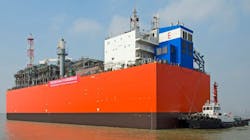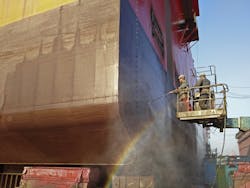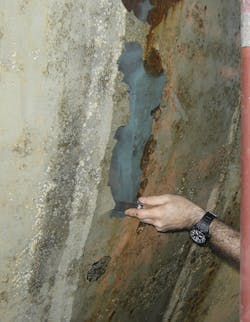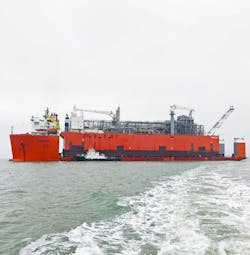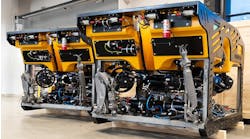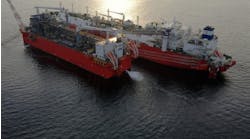By Ariana Hurtado, Editor and Director of Special Reports
HOUSTON — Corrosion costs the maritime industry between $50 billion and $80 billion annually, not including indirect costs, according to GlobalSpec Engineering 360 Newsdesk.
During the newbuild process, when converting an existing tanker to an FPSO or seeking an extended life for an offshore asset, it is important to choose a suitable coating for the expected life of the hull, insist on adequate surface preparation and apply the coating standardly, according to Subsea Industries.
In 2014 the Belgium-based company released Ecolock, a non-toxic, hard, durable coating to prevent corrosion in the hulls, immersed parts and splash zones of offshore assets, including oil and gas exploration, production and storage units as well as offshore renewable energy structures.
"The sea is one of the most corrosive environments on earth. The natural tendency of most of the materials used in the construction of offshore vessels, structures and assets in general is to corrode, resulting in wastage of material and weakening of the structures," David C. Phillips with Subsea Industries told Offshore. "Therefore, special measures need to be taken to protect the hulls of offshore industry vessels and structures to maintain structural integrity over an extended period of time, typically 20 to 40 years, which is how long FPSOs, FSRUs, FLNGs, offshore wind turbines, etc. are expected to remain on station."
He continued, "Because drydocking of these vessels is not easy and is very costly in terms of the actual drydocking and the off-hire time, and because attempting to repair underwater coatings in situ is prohibitively expensive even when possible at all, these special measures must be particularly effective and long-lasting without need of repair or replacement."
The offshore oil and gas industry typically requires that a coating must remain intact for a 20- to 40-year period, and Ecolock was designed to deal with the corrosion problem in offshore vessels and structures.
The "fatal downward spiral begins with a failure of the protective coating," Phillips said. "This is the weakest link and the Achilles heel in corrosion protection. It is also the entrance point for dealing with the problem. The key to solving the corrosion problem lies in the coating."
If a coating was not strong or durable enough, the preparation was inadequate and/or the application faulty, a coating will not protect the steel for the length of time required.
"Epoxy is often relied on in anticorrosive coatings. There are problems with epoxy as a resin, one of which is that the way it is generally applied is somewhat porous. The other problem is that it becomes brittle with time and can then crack when the plates flex," Phillips said. "The marine coatings industry in general is used to frequently replacing hull paint when ships come into drydock. This is not possible in the case of offshore assets. In general marine coatings are, frankly, not intended to last very long. And they don’t."
Anti-corrosion, cathodic protection capabilities
If an offshore asset is intended to remain stationery for long periods, Ecolock can be applied to prevent the asset from suffering from any corrosion and without requiring cathodic protection.
Subsea Industries says Ecolock is capable of protecting the underwater parts and splash zones of any offshore asset for its intended service life without the need for replacement. It dispenses with the need for cathodic protection. It is completely non-toxic to the marine environment, and any degree of fouling can be cleaned off without harming the coating or the environment.
While its use has primarily been for offshore vessels such as FLNGs, FPSOs, FSRUs, semisubmersibles and other vessels intended to remain on station for many years, it can also be used on bridges, quay walls, pipes, offshore wind turbines (both floating and fixed) and any other vessel or structure that needs to be protected from water or salt water for a long period.
In the works
The company has been working on UV protection as an added benefit for assets that need to keep their color without fading. This work resulted in Ecolast, which is Ecolock plus UV protection built in. This avoids the need for a relatively fragile polyurethane coating, which is usually used for this purpose, because Ecolast has this protection built in.
"We are looking to expand the use of Ecolock and Ecolast to protect the fixed and floating wind turbines, which are rapidly multiplying in number," Phillips said. "It was thought that the inside of the foundations, for example, would not need corrosion protection because they are supposed to be watertight and airtight. This was discovered to be a miscalculation. But inserting large numbers of sacrificial anodes into the foundations is not a solution. If the foundation were properly coated inside and out with Ecolock, using Ecolast for the areas that need to maintain their color, the problem would be solved without the need for anodes or ICCP. So this is an area we are looking at expanding into."
12.04.2023
